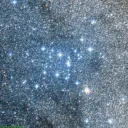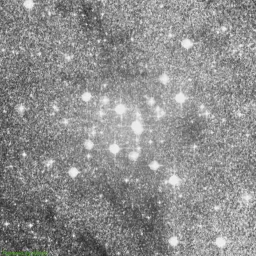Ptolemy's Cluster (M7) Observation Details

M7 Daily Motion
M7 will be visible until November, 19, when it will move too close to the Sun. During this time, its proximity to the Sun will cause it to disappear from the night sky, making it unobservable for a while.
M7 Visibility Timetable on October 06
M7 Rise and Set Timetable
| Time | Elevation | |
| M7 rise | 12:10 | |
| Moon Rise, 98.2% illuminated | 15:57 | 18° |
| M7 transit | 16:01 | 18° |
| Sunset | 16:43 | 17° |
| Civil sunset | 17:10 | 16° |
| Astrosession begin | 18:10 | 12° |
| M7 set | 19:53 | |
| Astrosession end | 03:41 | -85° |
| Moon Set | 04:33 | -83° |
Track M7 Position Throughout the Night
← Mon, 6 October 2025 →
| Time | |
| Altitude | |
| Azimuth |
Where is M7 right now?
M7 is located in the constellation Scorpius, at right ascension 17h 53m 51s" and declination -34° 47' 34s. At the current time, it is below the horizon and not visible from your location.M7 - Ptolemy's Cluster
Ptolemy's Cluster (M7) is an open cluster located in the constellation Scorpius. It was known to ancient astronomers and included in Messier's catalog in 1764. The cluster is named after the Greek-Roman astronomer Claudius Ptolemy, who mentioned it in his writings around 130 AD.
M7 spans about 25 light-years across and contains around 100 stars. The cluster is approximately 980 light-years away from Earth and has an apparent magnitude of 3.3, making it visible to the naked eye and easily seen with binoculars or a small telescope.
M7 Image Gallery
DSS Blue

DSS Red

DSS Near-Infrared

DSS Composite image

The photos are taken from the Digitized Sky Survey 2 (DSS2), which was produced at the Space Telescope Science Institute (STScI) under NASA contract, using data from the UK Science and Technology Facilities Council (STFC), the European Southern Observatory (ESO), and the National Geographic Society-Palomar Observatory Sky Survey (POSS II).
Special thanks to the National Optical Astronomy Observatory (NOAO), the Royal Observatory, Edinburgh, and the California Institute of Technology for their significant contributions.
Finder Chart for M7
| Object name | M7 |
| Field of view | |
| Limiting magnitude | |
| M7 coordinates | 17.89755, -34.79283 |
| Center coordinates | 17.89755, -34.79283 |
M7 Passage Through Night
Current position of M7
| Time | 03:21 |
| Latitude | 37.3541 |
| Longitude | -121.955 |
| M7 elevation | -82° |
| M7 Azimuth | 74° |
Annual motion of M7
| Date | Tue, 7 October 2025 |
| Twighlight start | 18:05 |
| Twighlight end | 03:35 |
| Twighlight duration | 10h 31m |
| Rise | 12:06 |
| Set | 19:49 |
| Elevation at transit | 18° |
| Transit time | 15:57 |
| Equatorial coordinates | RA: 17h 53m 51s", Dec: -34° 47' 34s |
| Magnitude | 3 |
| Constellation | Scorpius |
The graph is structured with the vertical axis showing the hours of the day, ranging from 12 AM to 12 AM the next day, while the horizontal axis spans each day of the year.
The reddish shaded area indicates the periods when the M7 is above the horizon, visible to observers. The white line marks the times when the celestial object reaches its highest point in the sky each day, known as the transit.
Astrometric & Physical Parameters of M7
Coordinates & Visibility
| Right Ascension | 17.89755° |
| Declination | -34.79283° |
| Magnitude | 3.30 |
| Constellation | Scorpius |
| Elevation | -81.9° |
| Azimuth | 74.4° |
Data Credits
The nebulae information on this page is sourced from the OpenNGC project, developed by Matteo Verga. OpenNGC provides detailed data on the NGC catalog, which is a valuable resource for exploring deep-sky objects such as nebulae.
For more details or to contribute to OpenNGC, visit the official GitHub repository: OpenNGC on GitHub.
